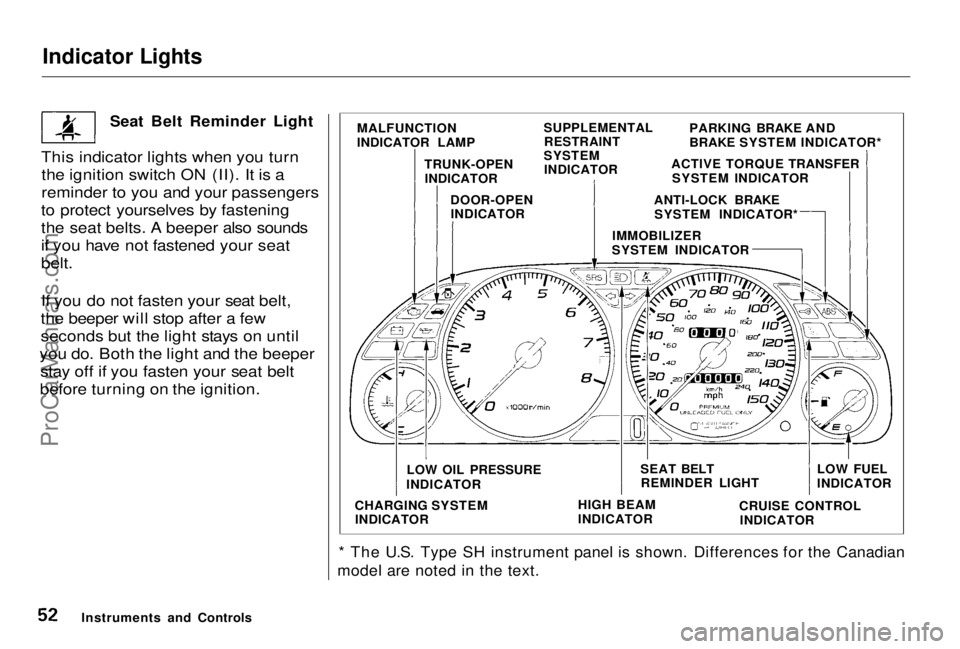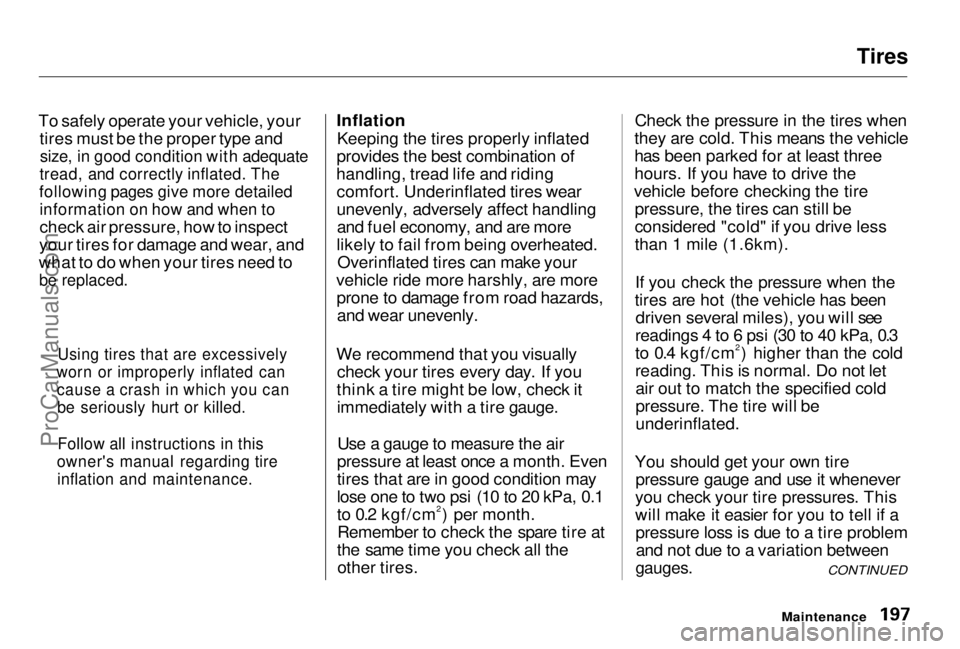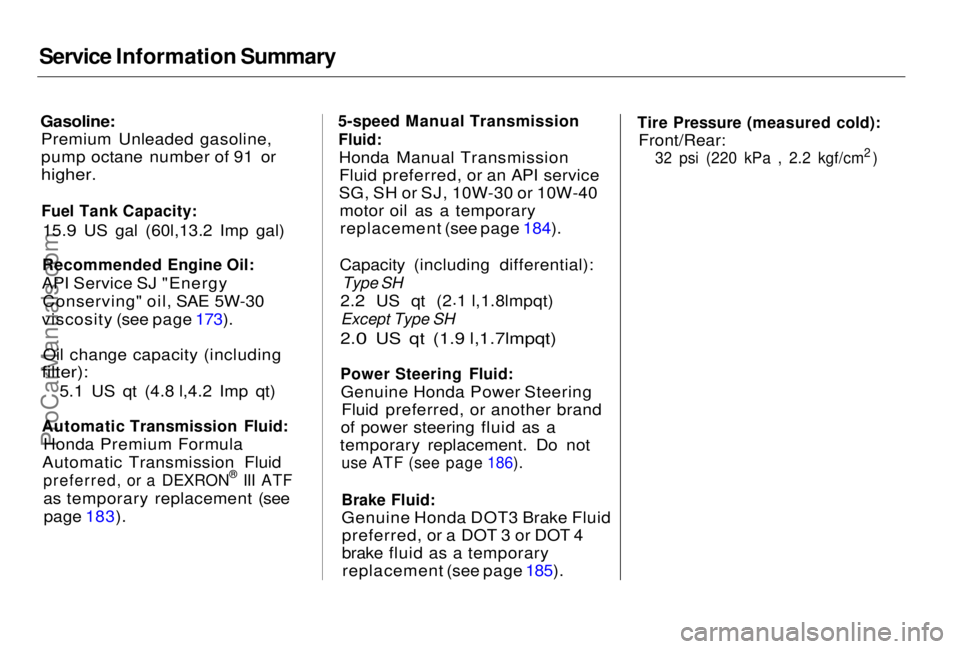fuel type HONDA PRELUDE 1998 Owners Manual
[x] Cancel search | Manufacturer: HONDA, Model Year: 1998, Model line: PRELUDE, Model: HONDA PRELUDE 1998Pages: 278, PDF Size: 2.61 MB
Page 53 of 278

Indicator Lights
Seat Belt Reminder Light
This indicator lights when you turn the ignition switch ON (II). It is a
reminder to you and your passengers
to protect yourselves by fastening
the seat belts. A beeper also sounds
if you have not fastened your seat
belt.
If you do not fasten your seat belt,
the beeper will stop after a few
seconds but the light stays on until
you do. Both the light and the beeper stay off if you fasten your seat belt
before turning on the ignition.
* The U.S. Type SH instrument panel is shown. Differences for the Canadian
model are noted in the text.
Instruments and Controls MALFUNCTION
INDICATOR LAMP
SUPPLEMENTAL
RESTRAINT
SYSTEM INDICATOR
TRUNK-OPEN
INDICATOR
DOOR-OPENINDICATOR PARKING BRAKE AND
BRAKE SYSTEM INDICATOR*
ACTIVE TORQUE TRANSFER SYSTEM INDICATOR
ANTI-LOCK BRAKE SYSTEM INDICATOR*
IMMOBILIZER
SYSTEM INDICATOR
LOW OIL PRESSURE
INDICATOR
CHARGING SYSTEM INDICATOR SEAT BELT
REMINDER LIGHT
HIGH BEAM
INDICATOR LOW FUEL
INDICATOR
CRUISE CONTROL INDICATORProCarManuals.comMain Menu Table of Contents s t
Page 196 of 278

Tires
To safely operate your vehicle, your tires must be the proper type and
size, in good condition with adequate
tread, and correctly inflated. The
following pages give more detailed information on how and when to
check air pressure, how to inspect
your tires for damage and wear, and
what to do when your tires need to
be replaced.
Inflation
Keeping the tires properly inflated
provides the best combination of
handling, tread life and riding comfort. Underinflated tires wear
unevenly, adversely affect handlingand fuel economy, and are more
likely to fail from being overheated. Overinflated tires can make your
vehicle ride more harshly, are more prone to damage from road hazards,and wear unevenly.
We recommend that you visually check your tires every day. If you
think a tire might be low, check it immediately with a tire gauge.
Use a gauge to measure the air
pressure at least once a month. Even
tires that are in good condition may
lose one to two psi (10 to 20 kPa, 0.1
to 0.2 kgf/cm2) per month. Remember to check the spare tire at
the same time you check all the other tires. Check the pressure in the tires when
they are cold. This means the vehicle
has been parked for at least three
hours. If you have to drive the
vehicle before checking the tire pressure, the tires can still be
considered "cold" if you drive less
than 1 mile (1.6km).
If you check the pressure when the
tires are hot (the vehicle has been driven several miles), you will see
readings 4 to 6 psi (30 to 40 kPa, 0.3
to 0.4 kgf/cm2) higher than the cold
reading. This is normal. Do not let air out to match the specified cold
pressure. The tire will be
underinflated.
You should get your own tire pressure gauge and use it whenever
you check your tire pressures. This
will make it easier for you to tell if a pressure loss is due to a tire problemand not due to a variation between
gauges.
Maintenance
CONTINUED
Using tires that are excessively
worn or improperly inflated can
cause a crash in which you can
be seriously hurt or killed.
Follow all instructions in this
owner's manual regarding tire
inflation and maintenance.ProCarManuals.comMain Menu Table of Contents s t
Page 278 of 278

Service Information Summary
Gasoline:
Premium Unleaded gasoline,
pump octane number of 91 or
higher.
Fuel Tank Capacity:
15.9 US gal (60l,13.2 Imp gal)
Recommended Engine Oil:
API Service SJ "Energy Conserving" oil, SAE 5W-30
viscosity (see page 173).
Oil change capacity (including
filter):
5.1 US qt (4.8 l,4.2 Imp qt)
Automatic Transmission Fluid:
Honda Premium Formula
Automatic Transmission Fluid
preferred, or a DEXRON ®
III ATF
as temporary replacement (see page 183).
5-speed Manual Transmission
Fluid:
Honda Manual TransmissionFluid preferred, or an API service
SG, SH or SJ, 10W-30 or 10W-40 motor oil as a temporaryreplacement (see page 184).
Capacity (including differential):
Type SH
2.2 US qt (2 .
1 l,1.8lmpqt)
Except Type SH
2.0 US qt (1.9 l,1.7lmpqt)
Power Steering Fluid:
Genuine Honda Power Steering Fluid preferred, or another brand
of power steering fluid as a
temporary replacement. Do not
use ATF (see page 186).
Brake Fluid:
Genuine Honda DOT3 Brake Fluidpreferred, or a DOT 3 or DOT 4
brake fluid as a temporaryreplacement (see page 185).
Tire Pressure (measured cold):
Front/Rear:
32 psi (220 kPa , 2.2 kgf/cm2)
ProCarManuals.comMain Menu s t